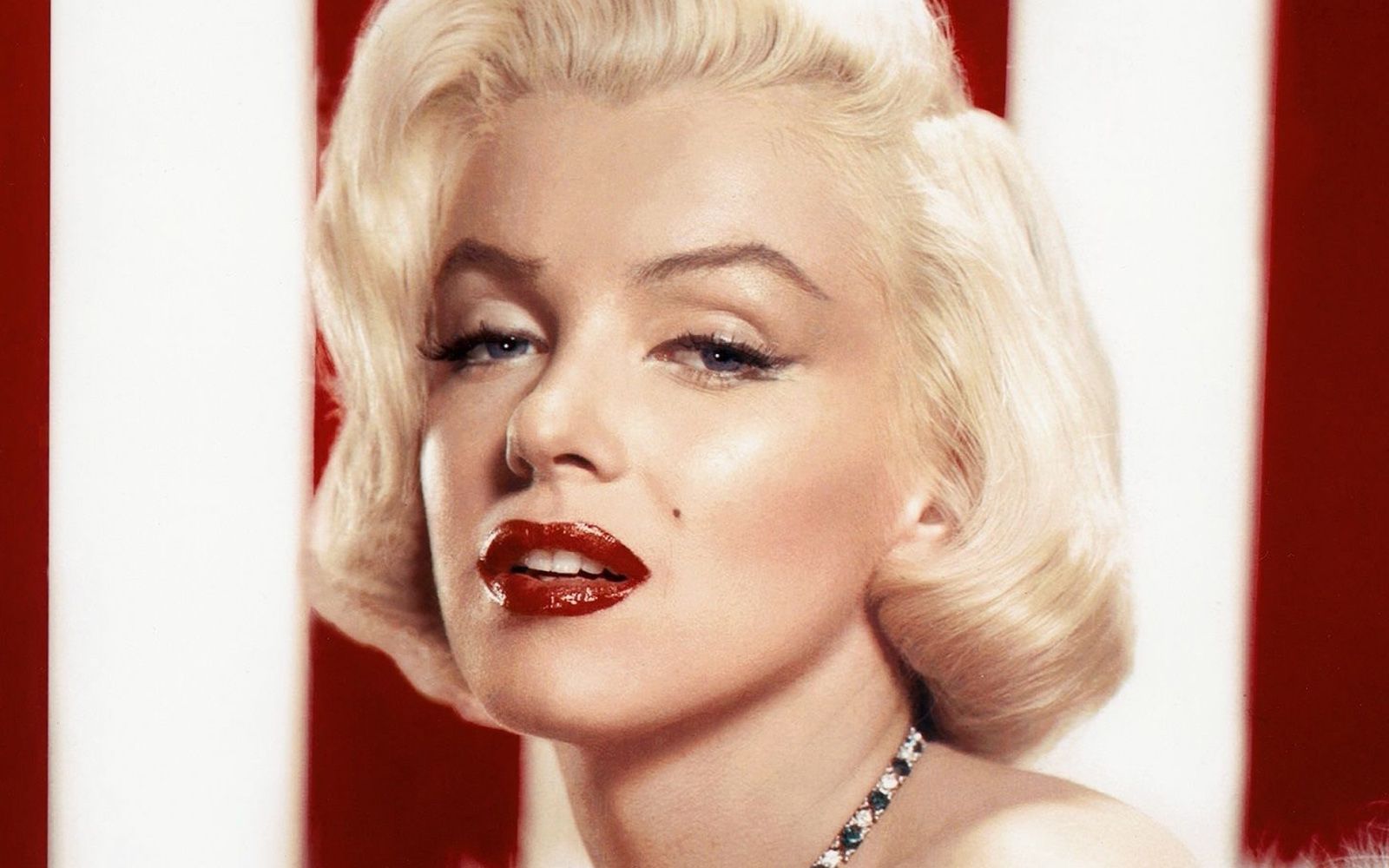
All of Marylin's hits missing from "Blonde" The star's career goes far beyond that of the ditzy blonde
Marilyn Monroe was not only the Blonde in the movie of the same name starring Ana De Armas. She was not only the symbol of the evil gaze object or a tragic figure, a victim of a Hollywood in which patriarchy was in charge. Marilyn was a woman, yes fragile and complex, but also intelligent, emancipated, and generous. There are many important things she did in her short life that the Netflix film does not mention. For example, she was an avid reader, a self-taught author who overcame stuttering and dyslexia to the point of collecting and reading over 400 books. She was one of the first female stars to become a producer and one of the first to openly denounce the sexual abuse to which actresses had to submit. Here are all of Marylin's accomplishments that are missing from Blonde.
She was the first actress to expose Hollywood's sexual predators
The denunciation of Hollywood's sexual harassment culture did not begin in 2017 or with the allegations against Harvey Weinstein, but much earlier. In January 1953, at the age of 27, Marilyn Monroe coauthored, with journalist Florabel Muir, an article titled "Wolves I Have Known" was spoke extensively about Hollywood's sex culture. Published in Motion Picture and Television Magazine, the piece denounced the notorious predatory practice of casting couch that allowed men in positions of power to abuse aspiring actresses. "The first real wolf I ever met should have been ashamed of himself because he was trying to take advantage of a mere child." Wrote the star and went on to list all the predators she had encountered up to that point, "There are many types of wolves. Some are sinister, others are just good-time Charlies trying to get something for nothing and others make a game of it. [...] I met them all. Phoniness and failure were all over them. Some were vicious and crooked. But they were as near to the movies as you could get. So you sat with them, listening to their lies and schemes. And you saw Hollywood with their eyes — an overcrowded brothel, a merry-go-round with beds for horses." Despite the abuse she suffered, Monroe was the first to expose a corrupt system: "In Hollywood a girl’s virtue is much less important than her hair-do. You’re judged by how you look, not what you are. Hollywood’s a place where they’ll pay you a thousand dollars for a kiss, and fifty cents for your soul. I know, because I turned down the first offer enough and held out for the fifty cents." Naïve as she was, Marilyn had soon realized that "this was not the way to get a job in the movies."
She was among the first to demand to be paid the same as her male colleagues
In 1954, 20th Century Fox forced Monroe to star in the musical The Girl in Pink Tights. Marilyn, who already considered the script garbage enough to write "garbage" on her copy, abandoned the set and refused to return after learning that her male performer was being paid three times her salary. Result? At first, the studio suspended her and the film was cancelled. Eventually, the actress and 20th Century Fox reconciled, and the studio gave her a starring role in Billy Wilder's The Seven Year Itch, complete with bonuses. In addition, the star was also granted the right to work for other studios and no longer just exclusively for 20th Century Fox, and under the new conditions she achieved a certain amount of creative freedom: she now had the right to approve the script, choreographer, and cinematographer of her films, as well as the right to veto any film that did not have one of her chosen directors.
She founded her own production company
In 1954, Monroe, fed up with the insulting roles and her meager salary at Fox, fled to New determined to be the architect of her own career. On January 7, 1955, she announced to the world the formation of Marilyn Monroe Productions, a production company of which she was president and her photographer friend Milton Greene was vice president. She was one of the first women to establish her own production company since silent film star Mary Pickford, and in later years her example was followed by many other stars such as Frank Sinatra, Paul Newman, and Barbra Streisand. The new producer role gave Monroe almost unparalleled power, allowing a diva of her stature to control her own career rather than be at the mercy of a fickle studio and its mogul. Among Marilyn Monroe Productions' biggest successes was Bus Stop, an adaptation of a play by William Inge directed by Broadway impresario Joshua Logan. The film gave Marilyn a chance to star in her first dramatic role. Her performance was so good that she won a Golden Globe and an Oscar nomination.
Her reaction to the nude photos
1949 and Marilyn was then a young model in a difficult economic situation and agreed, in exchange for a $50 fee, to pose for Tom Kelley for some nude photos that would be published in the Miss Golden Dreams calendar. The images resurfaced in 1952. The actress was already a famous star of show business and the Studio threatened to fire her, but Monroe acted ancipo and sold the photos to Hugh Hefner who published them inside the December 1953 issue of Playboy.
Supported Ella Fitzgerald's career
Let's go back to the 1950s. In the United States the race issue was flaring up, but a black artist was still considered second-class or worse and it was difficult for him or her to find a gig. Even for the great Ella Fitzgerald so much so that she was denied the chance to sing at Mocambo, the prestigious venue at 8588 Sunset Boulevard in West Hollywood frequented by the entire Hollywood jet set. When Marilyn Monroe learned of this, outraged, she did not hesitate to take action to help her favorite singer. It is said that the star personally telephoned the club's manager, engaging in a lengthy negotiation that ended when she said that in exchange for Ella Fitzgerald's performance at the club, she would agree to sit in the front row every night for a week. Thus, thanks to Marilyn Monroe's intervention, Ella Fitzgerald was the first black woman to perform in such a prominent Hollywood venue. This show marked a turning point in Ella's artistic career and gave a boost to racial integration.
Supported the LGTQI+ community
Marilyn was always supportive of the cause of the LGBTQ+ community and spoke out many times on queer issues and rights. The star was always supportive of friends who struggled with their sexuality, such as Montgomery Clift, one of the most sensitive and talented performers of her generation who starred with her in The Misfits. Referring to the actor, who was tormented and harassed for being gay, Monroe said, "People who aren’t fit to open the door for him, sneer at his homosexuality. What do they know about it? Labels. People love putting labels on each other. Then they feel safe." In a conversation with the lesbian president of her fan club, Jane Lawrence, Monroe added, "When two people love each other, who cares what colour or flavour or religion they are? It’s two human beings. It’s beautiful. Love is beautiful. It’s that simple."
She was a philanthropist
Marilyn showed her generous side many times. As soon as her financial situation improved, she supported many different causes. Since she had once been one herself, most donations went to underprivileged children. Among the charities she supported were WAIF, an organization that found homes for children, The Milk Fund For Babies, March Of Dimes and many others. She was also generous in her will where she left written that 25 percent of her estate "to be used for the furtherance of the work of such psychiatric institutions or groups as she shall elect." The amount went to the Anna Freud Pediatric Clinic in London.
























































